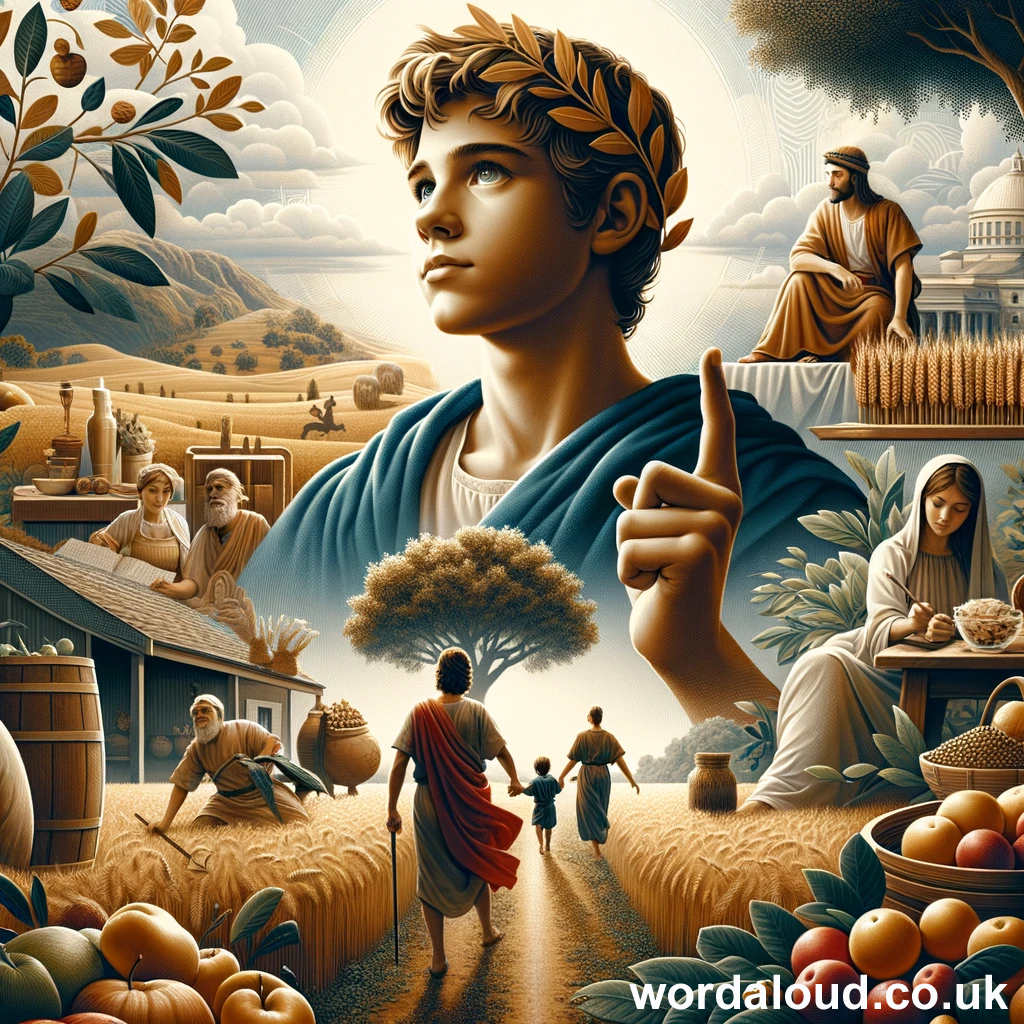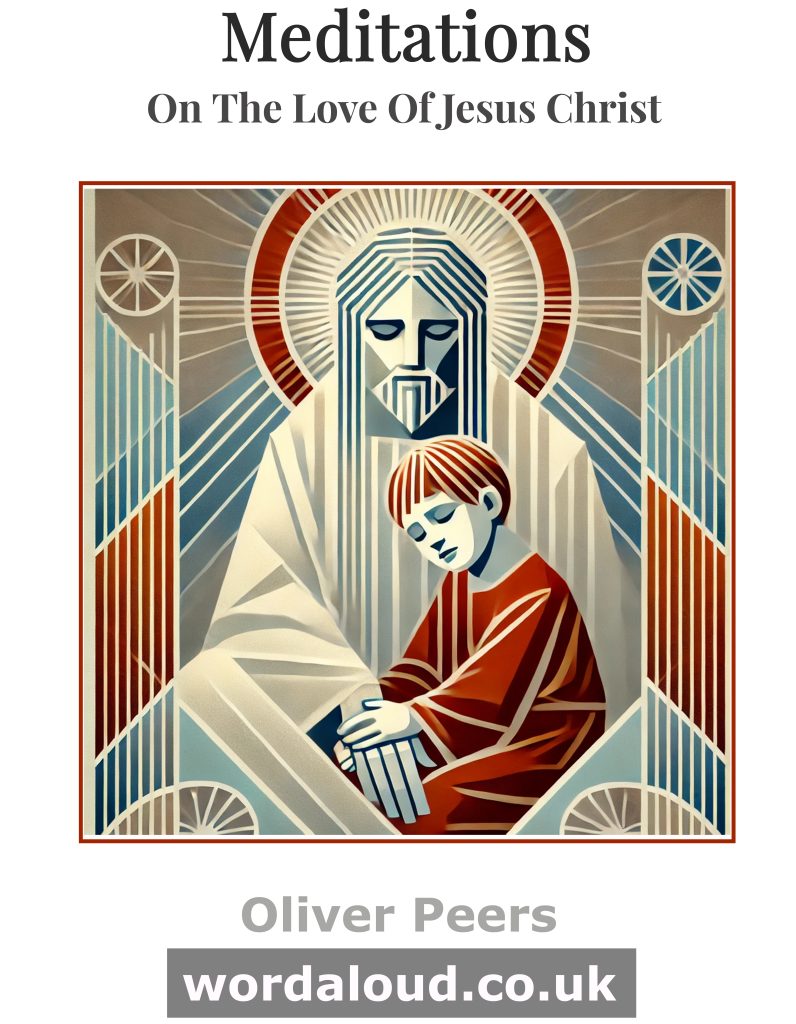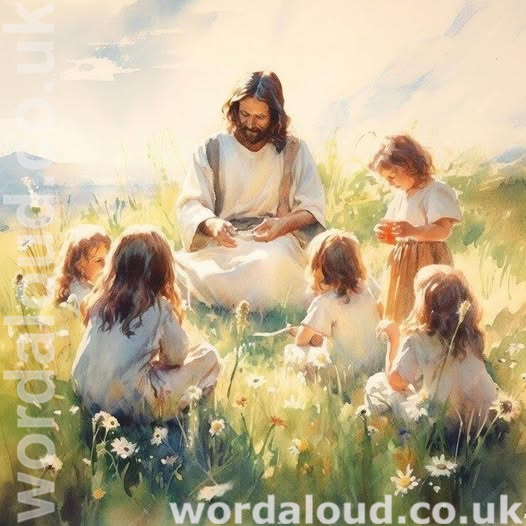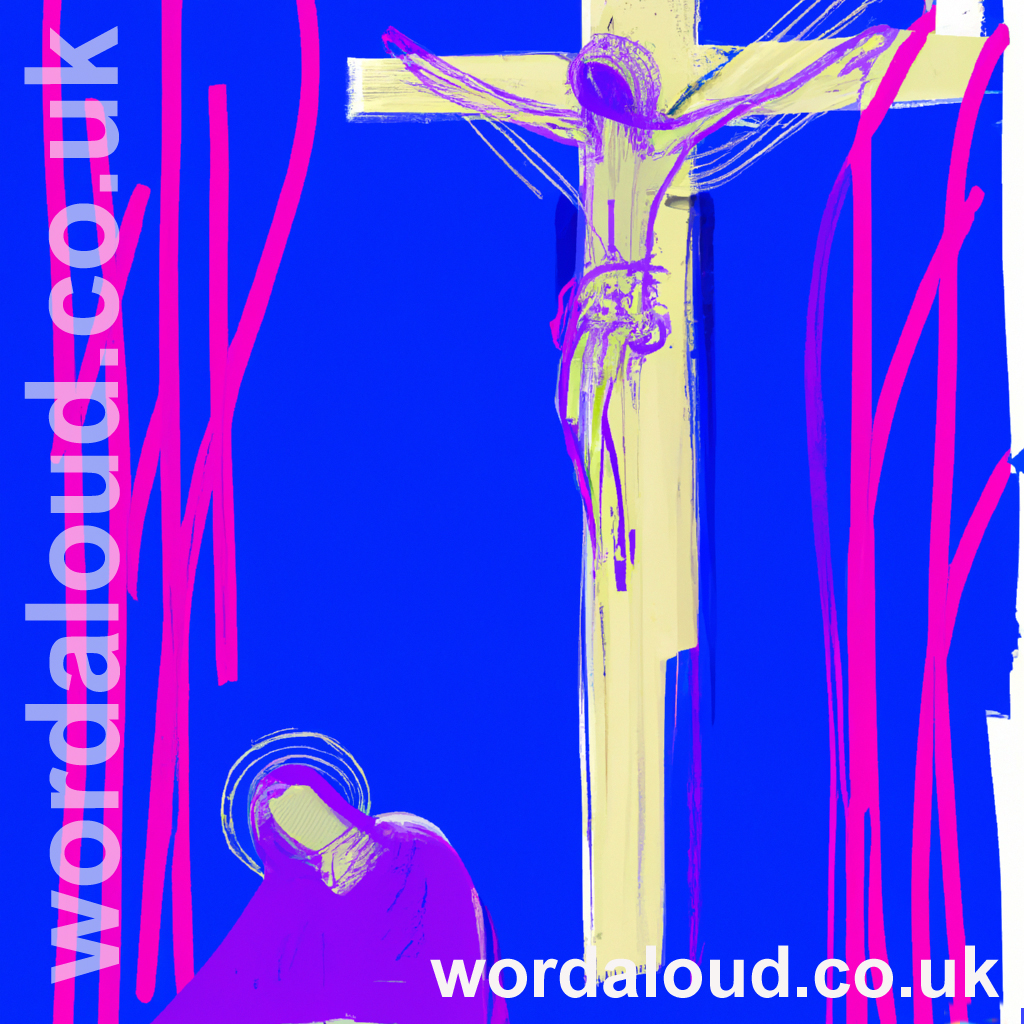Christian Art | Prayer With Jesus | Psalms | The Happy Home Of The Faithful | A Song Of Ascents | King David As A Boy | Audio KJV | Love Revealed By Jesus Christ | King James Audio Bible
Psalm 128 | King James Audio Bible
YouTube: Psalm 128 KJV | King James Audio Bible
Psalm 128 is in some ways a didactic poem, instructing listeners on the path to a blessed life. The psalm provides an illustration of tangible and intangible rewards that accrue from a life oriented towards God. The psalm expresses truths about the relationship between divine reverence, moral living, and the blessings that flow from such a life.
The opening verse of the psalm establishes the thought: ‘Blessed is every one that feareth the LORD; that walketh in his ways.’ This serves as a thematic anchor, introducing the concept of fear of the LORD — not as dread, but as awe and respect — as the source of blessing. The verse establishes a direct correlation between this reverence and walking in the ways of the LORD, implying a life led in accordance with divine principles.
The psalmist assures that the fruits of one’s labour will be enjoyed: ‘For thou shalt eat the labour of thine hands: happy shalt thou be, and it shall be well with thee.’ This assurance expresses the idea that diligent and righteous living, underpinned by a fear of the LORD, leads to personal fulfilment and prosperity. Imagery of eating the labour of one’s hands suggests a direct, satisfying relationship between work and its rewards.
Family life receives special attention in the psalm. Depiction of the wife as a fruitful vine by the sides of the house and children as olive plants around the table connotes abundance, stability, and continuity. These domestic images portray the home as a place of growth, vitality, and blessing. This metaphorical representation emphasizes the value of family in the divine scheme and the blessings that accrue within a household that fears the LORD.
The psalm reiterates blessing for those who fear the LORD, with emphasis on the communal aspect of these blessings: ‘The LORD shall bless thee out of Zion: and thou shalt see the good of Jerusalem all the days of thy life.’ This verse extends scope of divine blessing beyond the individual and family to encompass a community represented by Zion and Jerusalem. Reference to Zion connects an individual’s piety to a broader religious and communal life of Israel.
An intergenerational perspective is introduced with the mention of seeing one’s children’s children, signifying an enduring nature of blessings that result from fearing the LORD. This aspect of the psalm expresses continuity and the passing of heritage and values through generations.
The concluding wish for peace upon Israel encapsulates the psalm’s collective hope and prayer. This extends the individual and familial blessings to the national level, suggesting that the fear of the LORD and adherence to God’s ways have far-reaching implications for communal well-being and harmony.
Psalm 128 | King James Audio Bible
Blessed is every one that feareth the LORD; that walketh in his ways.
For thou shalt eat the labour of thine hands: happy shalt thou be, and it shall be well with thee.
Thy wife shall be as a fruitful vine by the sides of thine house: thy children like olive plants round about thy table.
Behold, that thus shall the man be blessed that feareth the LORD.
The LORD shall bless thee out of Zion: and thou shalt see the good of Jerusalem all the days of thy life.
Yea, thou shalt see thy children’s children, and peace upon Israel.

![]()
Psalm 128 | King James Audio Bible
- Blessings Of Reverence Towards God: The psalm opens with a declaration of blessings for those who fear the LORD and follow His ways. The psalm emphasizes that reverence and awe towards God are fundamental to receiving divine blessings.
- Reward Of Labour: The Psalm assures that those who fear the LORD will enjoy the fruits of their labour, symbolizing personal fulfilment and prosperity. The psalm highlights a direct, satisfying relationship between diligent work and its rewards under divine favour.
- Family As A Source Of Blessing: The Psalm portrays the family, represented by a fruitful wife and children like olive plants, as a central source of joy and blessing. The psalm emphasizes the value of a harmonious and flourishing family life within a God-fearing household.
- Community And National Blessings: Blessings extend beyond the individual to the community, with references to Zion and Jerusalem, signifying communal prosperity under God’s favour. The psalm connects individual piety with the well-being and prosperity of the broader community.
- Generational Continuity: The psalm speaks of seeing one’s children’s children, indicating the enduring nature of blessings across generations. The psalm underscores the importance of passing down values and heritage in a context of reverence towards God.
- Prayer For Peace: The psalm concludes with a prayer for peace upon Israel, extending the theme of blessings to the national level. This theme suggests that the fear of the LORD and adherence to God’s ways contribute to the overall peace and harmony of the community.

![]()








